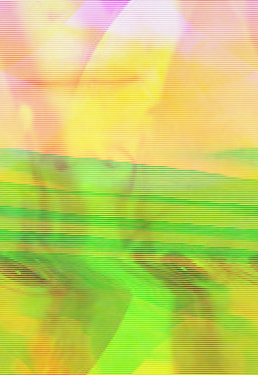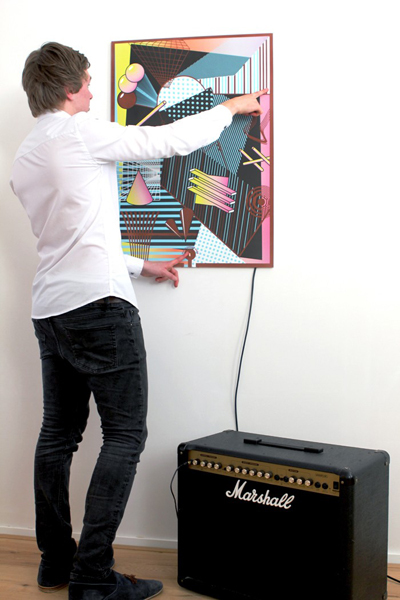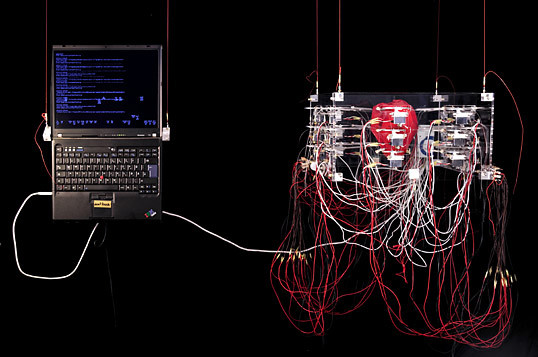Difference between revisions of "Ciska Swaak"
| Line 29: | Line 29: | ||
File:Sound_poster_03.jpg| Sound Poster 1.0 | File:Sound_poster_03.jpg| Sound Poster 1.0 | ||
</gallery> | </gallery> | ||
| + | |||
| + | |||
| + | |||
| + | === PULSE === | ||
| + | |||
| + | ''by Markus Kison'' | ||
| + | |||
| + | [http://markuskison.de/#pulse2012 WEBSITE] | ||
| + | |||
| + | [[File:Pulse2012_04.jpg|border|caption]] | ||
| + | |||
| + | |||
| + | ''ABOUT PULSE'' | ||
| + | |||
| + | pulse (2012) is a live-visualization of recent emotional expressions, written on private weblogs hosted at wordpress.com. Weblog entries are compared to a list of emotions, which refers to Robert Plutchik’s seminal book Psychoevolutionary Theory of Emotion published in 1980. Plutchik describes eight basic human emotions in his book: joy, trust, fear, surprise, sadness, disgust, anger, and anticipation. He developed a diagram in which these eight emotions, together with their weakened and amplified counterparts, form a three dimensional cone, consisting of 24 areas. The cone is the basic form of pulse, which can enlarge in the 24 directions of the different emotions. Each time an emotion tag, or a synonym of it, is found in a recent blog entry, the shape-shifting object transforms itself in such a way that the new volume represents a piece of the overall current emotional condition of surfers on the Internet. | ||
| + | |||
| + | ''Credits | ||
| + | This is the stable version of pulse created in may 2008 during my diploma thesis in the Digital Media Class at the University of the Arts Berlin''. | ||
| + | |||
| + | [https://vimeo.com/45721640 movie] | ||
| + | |||
| + | <gallery> | ||
| + | File:Pulse2012_01.jpg| PULSE | ||
| + | File:Pulse2012_03.jpg| PULSE | ||
| + | File:Pulse2012_05.jpg| PULSE | ||
| + | </gallery> | ||
| + | |||
| + | |||
== RESEARCH QUESTIONS == | == RESEARCH QUESTIONS == | ||
Revision as of 08:11, 1 October 2014
Contents
EXAMPLES CONTEMPORARY TECHNOLOGIES
Sound Poster 1.0 , 2.0, 3.0
by Trapped in Suburbia
ABOUT THE SOUND POSTERS
The Sound Poster 1.0 is our first experiment in which we try to mix digital with analog or the other way together. The biggest reason is that the 'experience' is considerably larger. Digital installations / projects / apps are often linked to a screen / tablet and that means that for example the environment or material (tactility) play a minimal role while these aspects a large role have on our experience. The Sound Poster is the first experiment with what you can do with a poster (print) in combination with technology (digital). In this case, we uses the open source technology and software Arduino and is connected with conductive copper ink. When the resistance changes, the sound changes with: soft touch gives a different sound than hard on the poster prints. The sound is now based on a synthesizer sound, we are now working on a sequel in which the sound is more based on real classical instruments.
We got inspired by Kandinsky his music theory; music was very important for him and most of his work is based on music.
The Sound Poster is developed together with David van Gemeren.
PULSE
by Markus Kison
ABOUT PULSE
pulse (2012) is a live-visualization of recent emotional expressions, written on private weblogs hosted at wordpress.com. Weblog entries are compared to a list of emotions, which refers to Robert Plutchik’s seminal book Psychoevolutionary Theory of Emotion published in 1980. Plutchik describes eight basic human emotions in his book: joy, trust, fear, surprise, sadness, disgust, anger, and anticipation. He developed a diagram in which these eight emotions, together with their weakened and amplified counterparts, form a three dimensional cone, consisting of 24 areas. The cone is the basic form of pulse, which can enlarge in the 24 directions of the different emotions. Each time an emotion tag, or a synonym of it, is found in a recent blog entry, the shape-shifting object transforms itself in such a way that the new volume represents a piece of the overall current emotional condition of surfers on the Internet.
Credits This is the stable version of pulse created in may 2008 during my diploma thesis in the Digital Media Class at the University of the Arts Berlin.







